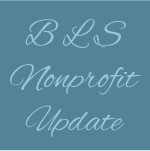 Accounting for PPP Loans: When does a Nonprofit’s PPP Loan Convert from a Liability to Revenue?
Accounting for PPP Loans: When does a Nonprofit’s PPP Loan Convert from a Liability to Revenue?
With the introduction of the CARES Act, our firm created a library of resources, mostly focused on the Paycheck Protection Program (PPP), to help entities, including nonprofit organizations, navigate the post-pandemic environment. However, lacking within the sea of resources is authoritative guidance on how nonprofit organizations should account for the PPP funds they receive. This is due to the unique nature of the transaction. The details are included on the Payroll Protection Program page of the SBA website.
A concise summary is as follows:
This funding represents a loan, with the potential to be forgiven based on the payment or incurrence of eligible costs during a defined “covered period,” with otherwise eligible costs deemed to be not eligible if employees earned in any pay period during 2019 a prorated amount on an annual basis deemed to be in excess of certain limits, subject to potential reduction of amounts forgiven if employee levels are not maintained compared to certain reference points in time, subject to additional reductions of amounts forgiven if salary levels are not maintained compared to certain reference points in time, however, if you hire, or attempt to rehire, employees before a specified deadline, your reduction in forgiveness is not a reduction after all.
As you can see, with the complexity of the transaction, the question of how to properly account for the funds is warranted.
Fortunately, there are a few tools for us to consider in determining the accounting treatment by nonprofit organizations. In what now appears to be an incredibly timely issuance, in June 2018 FASB issued ASU 2018-08 to clarify the scope of accounting guidance for contributions received. This update to accounting standards is effective for 2019 calendar reporting years and provides the basis for determining proper accounting.
Additional guidance came from the AICPA on May 13, 2020 in a special report from its Center from Plain English Accounting (CPEA). The CPEA Report references FASB ASC 958-605 and notes that conditions should be substantially met by the entity before the receipt of assets is recognized as a contribution. Some awards are conditioned on organizations’ incurring certain qualifying expenses (or costs). Those promises become unconditional and are recognized to the extent that the expenses are incurred. The AICPA’s CPEA report states a recipient nonprofit organization would recognize contribution revenue, in stages, as it incurs qualifying PPP expenses (including payroll, rent, and utilities), assuming conditions are “substantially met.”
While I agree with the CPEA report that this transaction represents a conditional contribution, I think the question of “when is the condition substantially met” may be more complex than outlined in their report. There are two primary areas that I think need to be further evaluated before following the CPEA report’s recommendation:
- Incurring Qualifying Expenses May Not Be an Appropriate Performance Barrier or Condition ASU 2018-08 indicates that qualifying expenses based on specific requirements in compliance with OMB or other restrictive grant documents results in limited discretion on the conduct of an activity and is indicative of a condition. However, PPP was NOT designed to limit how entities conduct their activity, but instead allows different types of entities to continue conducting their general activities as they had, while allowing for a mechanism to measure forgiveness based on the use of funds in broad categories. In addition, factors in determining forgiveness, including maintaining employee counts and salary rates, indicate that the forgiveness is based on metrics other than solely incurring eligible costs.
- Are Other Measurable Performance Barriers a Better Measure of the Condition? ASU 2018-08 indicates a donor-imposed condition is a donor stipulation that represents a barrier that must be overcome before the recipient is entitled to the assets transferred, with failure to overcome the barrier giving the donor a right of return. For a condition to exist, it must be determinable from the agreement when a recipient would be entitled to a transfer of assets. ASU 2018-08 includes the occurrence of a specified event as an indication of a barrier.
The PPP Loan agreements indicate that borrowers are eligible for loan forgiveness. However, forgiveness is contingent on application. Contrary to prior guidance, ASU 2018-08 states that a probability assessment about whether the recipient is likely to meet the stipulation is not a factor when determining whether a barrier exists. Given the complexity of the calculation and multiple factors in addition to eligible costs, would the process of calculating and applying for the potential forgiveness be a specified event that indicates a measurable performance barrier?
On May 22, 2020, the U.S. Small Business Administration (SBA) posted an interim final rule to adopt additional criteria for loan forgiveness and set forth the loan forgiveness process. The interim final rule explicitly states that a borrower shall not receive forgiveness without submitting all required documentation to the lender. The interim final rule states that a lender must issue a decision to SBA on loan forgiveness within 60 days of receiving the completed loan forgiveness application, at which time the lending institution requests payment from the SBA. The SBA has 90 days to remit payment to the lending institution. Does the lender’s approval of the forgiveness application represent a measurable performance barrier for forgiveness? Does SBA’s approval and funding of the loan, which likely clears the nonprofit from any liability associated with the PPP Funding, represent a measurable performance barrier?
So the question remains – When is it appropriate for a nonprofit organization to recognize revenue from a PPP Loan? In contrast to the CPEA report, we do not think the terms of these agreements are consistent with cost reimbursement grants we regularly see in practice where restrictions are placed on the conduct of an activity by the OMB or other regulatory agencies. Additionally, the existence of other factors, such as employee count and rate comparisons, add elements beyond the mere incurrence of costs.
Approval of the application by the lender and SBA, and ultimate funding of the obligation by SBA, may represent performance barriers; however, the nonprofit organization is not an active party to those processes and, therefore, it may not be considered a measurable performance barrier by the nonprofit.
Submission of the application by a nonprofit organization to the lender may be the most appropriate measurable performance barrier to consider. It is a requirement for forgiveness as indicated by the loan agreements, the application itself, and the SBA interim rule from May 22, 2020. It also coincides with the nonprofit organization’s quantification of eligible forgiveness, a calculation that is more complex than simply determining eligible costs. Submission of a report is generally considered an administrative stipulation that is not a performance barrier if it does not affect the extent to which the recipient is entitled to the contribution. However, in this situation, the application process, and calculation that coincides, has a significant effect on the nonprofit organization’s right to loan forgiveness. As a result, we think the submission of the application to the lender by the nonprofit organization is the point when the conditions are substantially met, and the PPP liability is recognized as revenue.
The forgiveness process is still in its early stages and is still evolving. There is likely to be great diversity in practice with accounting for PPP loans by nonprofit organizations. Adding to the complexity of the problem is that with the extension of the covered period from 8 weeks to 24 weeks, it is likely that the PPP covered period will span multiple reporting periods for certain fiscal-year nonprofits. We recognize that each situation may have unique factors to consider which creates disparity with the AICPA’s CPEA report on how a nonprofit organization accounts for PPP Loans. We recommend you reach out to your accounting professional to do so.
